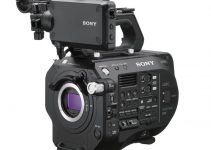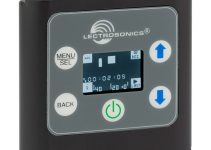When buying a video camera, the prices can range from anywhere to less than a hundred dollars for a basic camcorder all the way to a cinema-grade camera that costs as much as a college tuition. The general rule of thumb is that the more you spend on such a deivce, the better the image quality you will get.
So, between a $50 Sony Camcorder and a $50,000 RED Dragon cinema camera, there is obviously no competition. Nevertheless, Niko Pueringer from the filmmaking-duo Sam and Niko of Corridor Digital decided to compare the two rivals, not necessarily to show off, but to explore what actually raises the cost of a camera.
The first part of this particular comparison focuses on the captured resolution by both contenders. In the video, Niko puts the two cameras side-by-side in wide shot with the same field of view. At a glance, both cameras seem to compare pretty well. When looking at each footage closer, however, the differences start to become a lot more apparent.
Needless to say, the more expensive cameras like the RED Dragon have more details when the shot is zoomed in. For instance, the Red camera’s resolution is high enough to see the grates of the roof fans, or even the shape and blinking red indicator of an outdoor security camera. Meanwhile, all the minute details seen in the footage captured on the $50,000 camera have been reduced to gray, unappealing blobs of pixels on the $50 handycam.
Exposure is another property that can differentiate a cheap versus an expensive camera. Looking at the video, two tests were conducted: one with both cameras overexposed, another with both cameras underexposed. Again, the comparison unambiguously shows off that the more expensive device can preserve details in the shadows and highlights in a shot, even if it’s pushed to the edge.
When both cameras were manually overexposed, the RED Dragon still managed to preserve image details in the highlights enough so that when brought down into post-production, the image could be salvaged. Meanwhile, on the less expensive Sony camcorder, the highlights have been fully blown out. Due to the lack of image data provided from the small camera, preserving the highlights proved impossible, creating a very unappealing aesthetic.
When manually underexposed, however, both devices seemed to look equally too dark to be used for a project. Although when brought into post-production, the more expensive cinema camera really flexed its high price tag with much less noise and sharper image quality when brightness was added. On the other hand, the Sony camcorder suffered from the underexposure since attempts at color correction brought out blocky, green-tinted noise dominating the entire picture.
Color depth is another essential aspect of a camera that must be taken into consideration. Normal camcorders (which include the $50 camera included in the video) generally shoot with an 8-bit color depth, meaning that there are only 256 color values for the red, green, and blue channel where as a cinema-grade camera such as the $50,000 RED Dragon shoots at 16-bit color depth, with whopping 65,000 color values, resulting in much more possible colors.
This difference can be clearly seen in their comparison when both cameras were facing the sky, and the contrast was pushed to the extreme. Looking at the cheaper camcorder, there was a lot of banding and noise while on the more expensive camera, there was little to no noise in the shot, as well as much richer colors. The significant increase in color depth is seen because the gradient from white to blue is much smoother than that of the less expensive camera.
Dynamic Range is also a common property that consumers and prosumers must pay attention to in regards to camera purchasing. More expensive cameras will have a higher dynamic range, meaning that the way they handle highlights and shadows is much more balanced. In the video, the RED Dragon preserves a lot more image detail in the light and dark areas, with the highlights not being too blown out or the shadows becoming overly dark. This is in contrast to the less expensive Sony camcorder, which blows out the highlights completely.
As we all know, image data can be recorded in many different ways, and depending on the camera, may have different compression options. Compression is basically a way for the camera to reduce the file size of a video by trying to encode less data, depending on the settings of the compression. On most consumer video cameras, the standard H.264 codec is utilized.
In the meantime, the more expensive cameras such as those from RED have a multitude of compression options that range from the proprietary REDCODE Raw to all flavors of the industry-standard codecs such as ProRes and DNx. Looking at footage shot from each camera in motion, the cinema-grade RED Dragon preserves details in the smallest areas including the lines of wood oak or the thin leaves of a bush whereas, in the consumer-grade Sony camcorder, all that detail seen from the RED is reduced to a chunk of bland colors.
One final property of a camera to consider is color integrity/accuracy, or how precisely a camera’s color can mimic that of reality. Ungraded, both the expensive and cheap cameras faired rather closely, with some slight advantages to the RED Dragon because of their critically-acclaimed camera color science.
Although once you start doing some color grading, the cheaper camera starts to fall short with a loss in detail and color transitions within the highlights, whereas the more expensive camera can preserve all the details while keeping a balanced image.
While of course, the RED Dragon remained on the throne throughout these tests, it’s important to remember that the point of Sam and Niko’s experiment is not to gloat that you need the most expensive camera to get the best footage. Instead, their experiment acted as a way to show how camera technologies are ever-evolving and becoming much cheaper as time goes by.
Imagine years ago when the most inexpensive camera cost a few thousand dollars. No matter what filmmaking tool you use, it’s important to understand its limitations and how to work around them. Although if you are fortunate to own or use a cinema-grade camera, it’s important to understand its capabilities and use them to your advantage over the rest.
[source: Sam and Niko]
B&H Order Links:
RED DIGITAL CINEMA EPIC-W Brain with HELIUM 8K S35 Sensor
Sony HDR-CX405/BE HD Handycam (PAL)
Disclaimer: As an Amazon Associate partner and participant in B&H and Adorama Affiliate programmes, we earn a small comission from each purchase made through the affiliate links listed above at no additional cost to you.




I disagree with the high profile color correction (which was obviously built for the red) but overall there’s something all creators need to remember – content wins! If you shoot the most exciting content with your $50 sony cam vs. a dull content with the Red cam, guess which one will win?